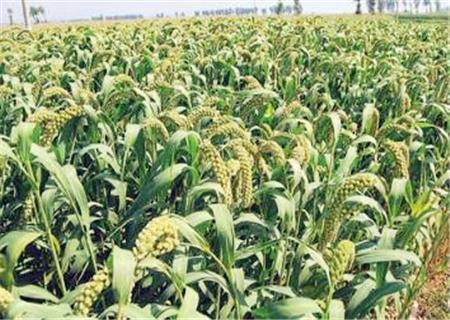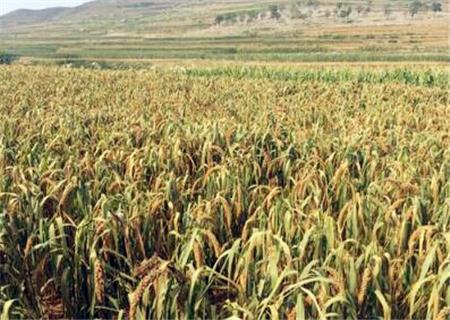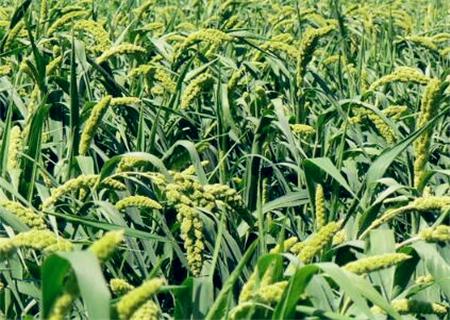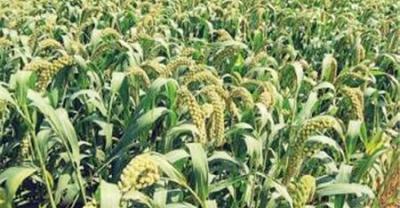How to grow millet? How many months do you plant and how many months do you harvest? What is the yield per mu? What are the market prospects?
With the improvement of people's living standards, gradually pay attention to the importance of health, from always eating rice to now often have to eat millet. So how do you grow millet? How many months do you plant and how many months do you harvest? What is the yield per mu? What are the market prospects? The details are sorted out as follows, hoping to help you.

Millet planted in several months and harvested in several months.
Millet (millet), after spring sowing and frost breaking (after Grain Rain in Central Plains), sowing to harvest in about 135days; sowing in the first and middle of June, sowing to harvest in about 100days. The time difference between early, middle and late maturing varieties is about 10 days.
What is the yield of millet per mu?
The millet yield of the general variety is 300 to 400 kilograms, and the rice yield is 70 to 75 percent. It is reported that the highest yield of hybrid millet is 972 kg per mu and 800 kg in a large area.
Prospect and benefit of millet planting
market prediction
Millet is a traditional staple crop in China, and millet is the husked millet after processing. Millet is sweet and slightly cold, which has the effects of invigorating spleen, dehumidification, calming nerves and so on. Can do porridge cooking, is one of the miscellaneous grains that consumers like to eat. With the strengthening of people's awareness of health care, the consumption of miscellaneous grains has become a fashion. Millet as a miscellaneous grain, the consumption of millet has been increasing in recent years, and the market prospect of planting millet is promising.
Benefit analysis
Millet used to have a relatively low yield of 75,125 kilograms per 667 square meters, which has long been called a low-yield crop. In recent years, due to breakthroughs in breeding and cultivation techniques, the yield per 667 square meters has increased to 350 million 400 kg, and the high yield field has exceeded 500 kg. At present, the price of millet on the market is relatively high, between 1.4 and 1.5 yuan per 500g, and the income of planting millet is more than 1000 yuan per 667m2. Because millet has the characteristics of drought resistance, barren resistance and disaster resistance, it is especially suitable for planting in arid and semi-arid areas. Planting millet is a good way to develop economy in these areas. The growth period of millet is relatively short, and the general growth period of summer millet is 85-90 days. It is an ideal continuous crop for planting after wheat harvest in most parts of northern China.

Direction of development
Millet, as a miscellaneous grain, should first develop in the direction of high quality and high yield. Solving the problem of high yield of millet is the premise of improving economic benefit, which is very important for the improvement of local famous varieties. The average protein content of millet is 11.42%, of which lysine content is 1.16%-3.65% of protein content. Increasing protein content and lysine content is the development direction of cultivation and breeding work in the future. Millet contains unsaturated fatty acid linoleic acid 2.54%-5.85%. Increasing the content of linoleic acid is the development direction in the future.
Secondly, the color of millet should develop in the direction of golden yellow, the golden millet market is promising, and the market price of large grain millet is higher.
Cultivation techniques
1. The varieties often cultivated in northern China are Hebei Jigu series, Henan Yugu series, Shandong Jingu series and Lugu series.
2. Millet in cultivation season and rotation can be divided into spring cultivation and summer cultivation. The sowing time of spring cultivation is early April in Huang-Huai region, and the harvest time is mid-late July. The following crops can only grow late autumn crops with a relatively short growth period. In summer cultivation, the sowing time is in the middle and late June after wheat harvest. As long as it is well managed, a good harvest can be achieved by delaying sowing until the first and middle of July. At present, millet cultivation is mainly in summer, and spring cultivation is mostly in the northern one-season cultivation area.
Millet avoid continuous cropping, continuous cropping disease is serious, there are many millet atrains, and the growth and development is poor. Bean stubble and sweet potato stubble were better in spring grain, and wheat stubble was better in summer grain.
3. The root system of sowing millet is developed and the ability of absorbing fertilizer is strong, so applying sufficient base fertilizer can significantly increase the yield. Before cultivated land, 2500-3000 kg of organic fertilizer, 40-50 kg of calcium superphosphate and 10-15 kg of urea were applied every 667 square meters. Ploughing and ploughing and soil preparation should be fine, flat and solid after fertilization, which is conducive to preserving soil moisture and laying the foundation for sowing the whole seedling.
There are two sowing methods: sowing and strip sowing. Strip sowing is dominant in high-yield fields and sowing is dominant in western arid areas. The sowing rate of sowing is 1000~I500 grams per 667m2, and the sowing amount of strip sowing is 1000 grams.
4. After the field management has three leaves, the field management must take the tight management for half a month, clearing the seedlings twice and ploughing and hoeing for three times. Seedling retention should be carried out on the basis of inter-seedling, small pier close planting, parallel pier, triangle seedling, seedling height of 6 cm to 8 cm, about 40,000 seedlings per 667 square meters.
After setting the seedlings, the seedlings were ploughed and weeded for many times to prevent the breeding of weeds, and at the same time to promote root and root, so as to achieve the purpose of growing roots and controlling culms. Before throwing big leaves, 1520 kg of urea is applied every 667 square meters, and timely watering in case of drought. In the later stage, we should pay attention to protecting leaves and promoting grain fullness.
Risk hint
Planting millet is a good project for farmers in arid and underdeveloped areas to get rich, especially in some economically backward areas, so it is worth popularizing and planting in arid and semi-arid areas of our country.
Cases of getting rich
Rural uncle grows millet, and emotional sales earn 3 million a year.

Mr. Luo, from the countryside, saw the business opportunity. If you plant your own millet and process it yourself, the market prospect must be very good. As soon as he did it, Mr. Luo began to work aggressively. However, when they put their products on the market, they found that their products are not well-known, and they do not have many features than other products, and few people buy them.
Just when Mr. Luo was worried, a friend came to visit and said to him: when I was a child, the rice crushed with stones at home was delicious and delicious. This remark immediately awakened the dreamer. Mr. Luo instantly found his own unique point: the selling point.
But it is not realistic to use manual grinding. Is there any machine on the market? what should we do? Mr. Luo decided to develop a rice grinding machine by himself.
In this way, Mr. Luo opened the sales channel instantly to recall the taste of childhood, and constantly improved, grinding Xiaomi with other miscellaneous grains. Deeply loved by the public, now the annual income can reach 3 million yuan.
Now people of different ages and preferences will buy Mr. Luo's millet products!
- Prev

Do farmers have to pay for planting "following the trend"? These two crops must be planted "carefully"!
The market of crops is relatively depressed in the past two years, whether it is vegetables or grain, the market demand is unstable, the price fluctuation is also more obvious, farmers are choosing.
- Next

How to choose plastic film when growing vegetables and why only black plastic film is used to grow strawberries?
Plastic film is used for plastic film mulching. Plastic film mulching is achieved in almost all facility vegetables, even in open field vegetables.
Related
- Fuxing push coffee new agricultural production and marketing class: lack of small-scale processing plants
- Jujube rice field leisure farm deep ploughing Yilan for five years to create a space for organic food and play
- Nongyu Farm-A trial of organic papaya for brave women with advanced technology
- Four points for attention in the prevention and control of diseases and insect pests of edible fungi
- How to add nutrient solution to Edible Fungi
- Is there any good way to control edible fungus mites?
- Open Inoculation Technology of Edible Fungi
- Is there any clever way to use fertilizer for edible fungus in winter?
- What agents are used to kill the pathogens of edible fungi in the mushroom shed?
- Rapid drying of Edible Fungi

